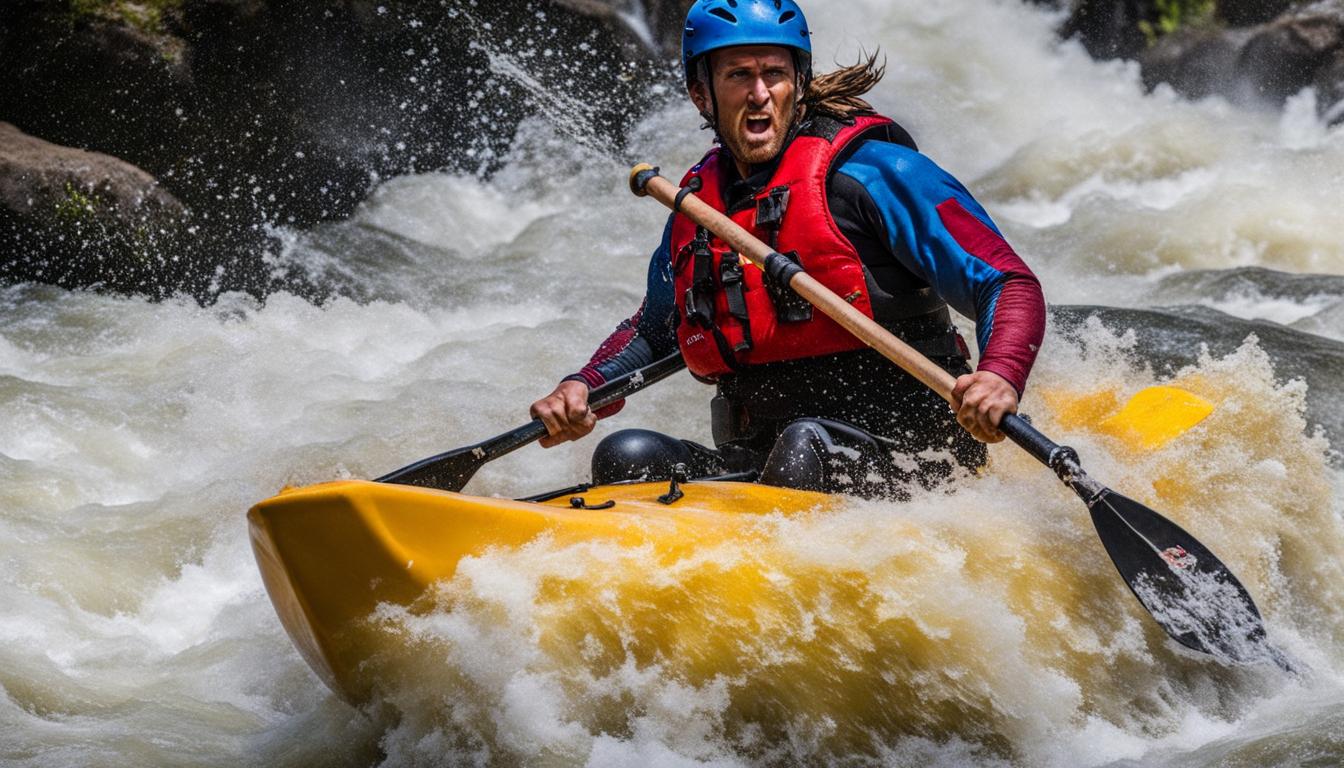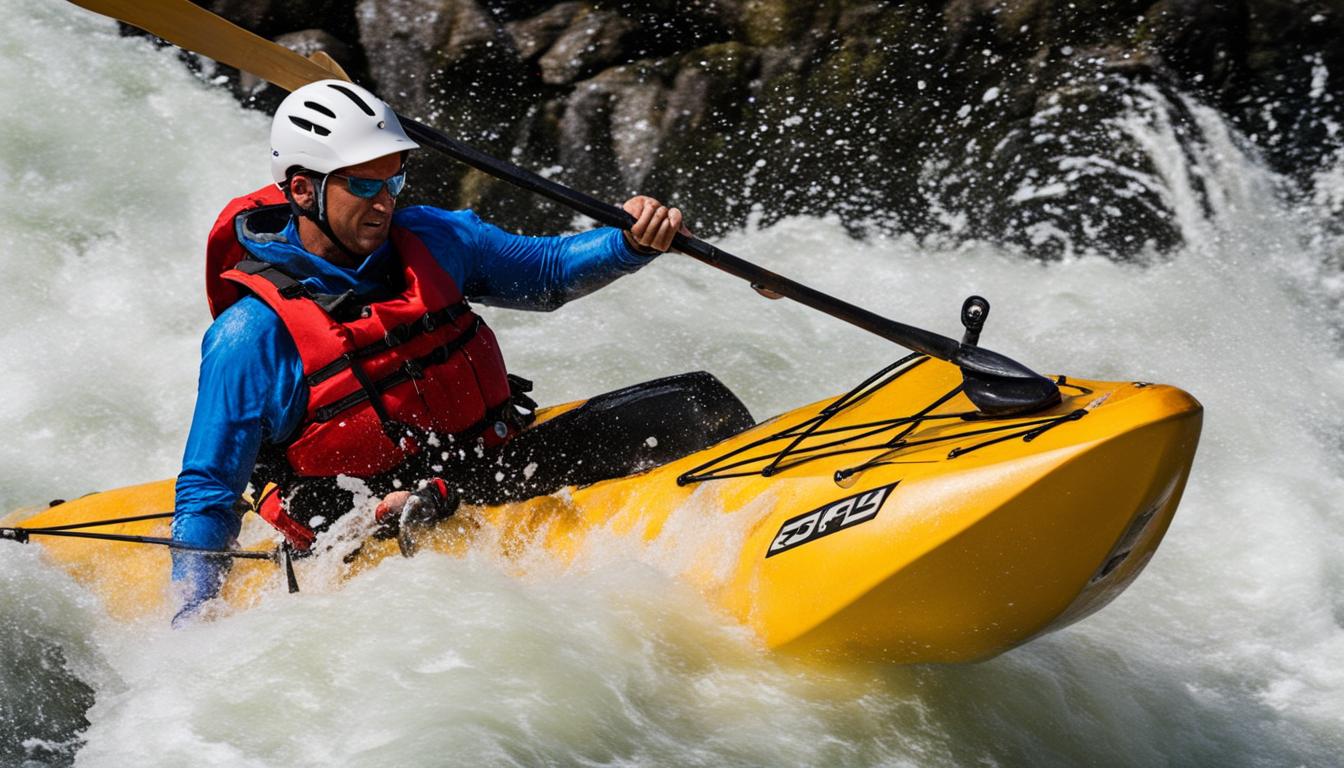Welcome, fellow sea kayakers! If you’re passionate about exploring the open waters and gliding through picturesque scenery in your kayak, then you know the importance of being physically fit. Sea kayaking requires stamina, strength, and balance to fully enjoy the experience and tackle the challenges that come your way. In this article, we’ll provide you with essential fitness and training tips specifically tailored for sea kayakers like you. Let’s dive in!
Key Takeaways:
- Prepare for kayaking by training your core muscles, building endurance in your arms and shoulders, and improving your balance.
- Start your training 6 to 8 weeks before your kayaking adventure, incorporating strength training, cardio exercises, and rest days.
- Consult with a doctor or certified training professional before starting any training plan.
- Engage in strength training exercises to enhance your power and stability for effective strokes.
- Include endurance training sessions to maintain continuous motion during stroke sequences.
Strength Training Exercises for Kayakers
Kayaking requires a combination of strength and stability to power through those challenging strokes. Incorporating specific strength training exercises into your routine can help you develop the necessary muscles for kayaking. By targeting the core, upper body, and legs, you can enhance your kayaking performance and minimize the risk of injuries.
Core Exercises
The core muscles play a crucial role in generating power for your strokes. Here are some effective core exercises:
- Russian Twists: Sit on the ground, knees bent, feet lifted, and twist your torso from side to side while holding a weight or a paddle.
- Plank Variations: Hold a plank position on your elbows or hands, engaging your core and keeping your body in a straight line.
Upper Body Exercises
Strong arms, shoulders, and back are essential for efficient paddling. Here are a few exercises to target these muscle groups:
- Push-Ups: Perform traditional push-ups or modify them by placing your hands wider or closer together to activate different areas of your upper body.
- Dumbbell Rows: Bend forward with a dumbbell in one hand, extend your arm back, and pull the weight toward your side, engaging your back muscles.
Leg Exercises
Leg strength is crucial for stability and power transfer in kayaking. Consider including these exercises in your routine:
- Squats: Stand with feet shoulder-width apart and lower your body by bending your knees, keeping your back straight. Return to the starting position by pushing through your heels.
- Lunges: Step forward with one foot, lowering your body until both knees are bent at a 90-degree angle. Push back up and repeat with the other leg.
Remember to start with lighter weights and focus on proper form for each exercise. Gradually increase the intensity and resistance as you build strength. Consult with a fitness professional for personalized guidance and modifications based on your fitness level and any pre-existing conditions.

Endurance Training for Kayakers
Endurance training is a crucial component of a comprehensive training program for kayakers. It focuses on building stamina and allowing kayakers to maintain continuous motion during stroke sequences. Incorporating specific endurance workouts into your training routine can greatly enhance your performance on the water.
The Benefits of Endurance Training
Engaging in endurance training exercises offers a variety of benefits for kayakers. It helps to improve cardiovascular fitness, allowing you to paddle for longer periods without getting fatigued. Endurance training also aids in building mental resilience and focus, enabling you to maintain concentration during lengthy kayaking sessions. Additionally, it enhances muscular endurance, helping you sustain the repetitive movements involved in paddling.
Recommended Endurance Training Exercises
When it comes to endurance training for kayaking, flatwater sessions in your kayak are highly effective. Begin by paddling at a moderate pace for 20 minutes or splitting it into two 10-minute intervals. As your training progresses, you can incorporate more intense bursts of paddling. For example, try five 3-minute bursts of hard paddling with a 1.5-minute recovery in between. This interval training stimulates your cardiovascular system and challenges your endurance.
| Session | Duration | Intensity | Recovery |
|---|---|---|---|
| Warm-up | 5 minutes | Low to moderate | N/A |
| Interval 1 | 3 minutes | High | 1.5 minutes |
| Recovery 1 | 1.5 minutes | Low | N/A |
| Interval 2 | 3 minutes | High | 1.5 minutes |
| Recovery 2 | 1.5 minutes | Low | N/A |
| Interval 3 | 3 minutes | High | 1.5 minutes |
| Recovery 3 | 1.5 minutes | Low | N/A |
| Interval 4 | 3 minutes | High | 1.5 minutes |
| Recovery 4 | 1.5 minutes | Low | N/A |
| Interval 5 | 3 minutes | High | 1.5 minutes |
| Cool-down | 5 minutes | Low to moderate | N/A |
Remember to warm up properly before starting your endurance training and cool down afterward to prevent injuries and aid in recovery. It’s also essential to listen to your body and adjust the intensity and duration of your workouts based on your fitness level and progress over time.
By incorporating endurance training into your regular kayaking fitness routine, you’ll be able to paddle longer, stronger, and with greater ease. Building your endurance will prepare you for longer kayaking adventures, help you conquer challenging waters, and make your overall kayaking experience more enjoyable.
Cardiovascular Exercise for Kayakers
Physical training is a critical component of preparing for sea kayaking. While strength and endurance training are important, cardiovascular exercise is equally essential for kayakers to improve their overall fitness and stamina on the water. Incorporating regular cardiovascular workouts into your training routine will help enhance your cardiovascular health, boost endurance, and support your kayaking performance.
When it comes to cardiovascular exercise, the options are plentiful. Running, biking, swimming, and other aerobic activities are all great choices to get your heart pumping. The key is to find an activity that you enjoy and that challenges you physically. Aim to include at least two nonconsecutive cardio sessions per week in your training schedule.
During your cardio workouts, you should strive to maintain a moderate to high intensity level for an extended period of time. This will help improve your cardiovascular fitness and build your endurance. Start with shorter durations and gradually increase the duration and intensity of your workouts as your fitness level improves. Remember to listen to your body and make adjustments to your training as needed.

Kayaking requires both upper and lower body strength, as well as excellent cardiovascular fitness. By incorporating regular cardiovascular exercise into your training routine, you can improve your overall fitness levels and enhance your performance on the water. So lace up your running shoes, hop on your bike, or dive into the pool, and get ready to take your kayaking to the next level with the power of cardiovascular training!
Conclusion
In conclusion, building kayaking muscle strength and conditioning for sea kayaking are crucial for enhancing your performance on the water. By incorporating a comprehensive training program that includes strength training exercises, endurance training, and cardiovascular exercise, you can develop the necessary physical fitness required for kayaking.
Targeting your core muscles through exercises like the open book exercise, skater with uppercut, kneeling chop exercise, kneeling lift exercise, and single-leg squat and row exercise will help you build the strength needed to generate powerful strokes. Engaging in flatwater sessions and gradually increasing the intensity will improve your endurance, allowing you to maintain continuous motion during stroke sequences.
Additionally, including cardiovascular exercise, such as running, biking, or swimming, in your training routine will improve your cardiovascular health, increase your endurance, and boost your overall fitness levels. It is important to listen to your body, gradually increase the intensity, and consult with professionals if needed to ensure a safe and effective training program.
By focusing on building kayaking muscle strength, conditioning your body through endurance training, and incorporating cardiovascular exercise, you will be well-prepared to excel in the challenging and rewarding sport of sea kayaking.
FAQ
How long before kayaking should I start training?
Training should begin 6 to 8 weeks before kayaking.
What muscles should I focus on when training for kayaking?
It is important to focus on training the core muscles, shoulder and arm muscles, and balancing muscles.
What are some recommended strength training exercises for kayakers?
Some recommended strength exercises include the open book exercise, skater with uppercut, kneeling chop exercise, kneeling lift exercise, and single-leg squat and row exercise.
How can I improve my endurance for kayaking?
Engage in flatwater sessions in your boat, starting with moderate-paced paddling and gradually incorporating bursts of hard paddling with recovery periods.
What type of cardiovascular exercise should I include in my training?
Activities like running, biking, swimming, or any other preferred aerobic exercise can help improve cardiovascular health and increase endurance.
Is it important to consult with a professional before starting a training plan?
Yes, it is important to consult with a doctor or certified training professional before starting any training plan.





